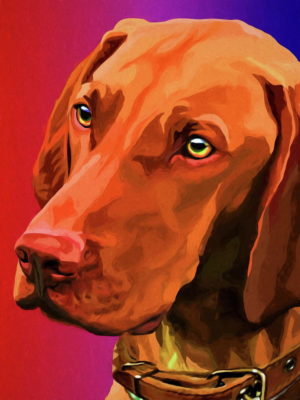
On a partly sunny day in the year 895, seven tribes known as the Jenő, Kér, Keszi, Kürt-Gyarmat, Megyer, Nyék, and Tarján arrived in the Pannonian plain in Central Europe. The heads of these seven tribes, men known as Álmos, Elöd, Kond, Tas, Huba, Töhötöm and Ond, determined to choose a supreme commander from amongst themselves. They chose as their leader, Árpád, then concluded the election with a blood pact in which a container filled with their own blood was blended to symbolically signal fraternal bonding.
The House of Árpád, also known as the Árpád Dynasty, was the beginning of the transformation of a confederation of Hungarian tribes into a powerful state of east-central Europe – Hungary, and according to historian/author, G. Wenzel, the Vizsla was there.
The first written reference to Vizsla as a breed was recorded in the Illustrated Vienna Chronicle prepared on order of King Lajos the Great by the Carmelite Friars in 1357. It was a compilation of ancient Magyar writings that included a chapter on falconry and a depiction of the Vizsla. A letter written in 1510 further provides evidence of the breed’s deep past when the writer writer asks his brother for a Vizsla suitable to net quails. Far earlier, stone carvings from the year 1000 that depicted Magyar lords with their falcons and hunting dogs very similar to the modern Vizsla underscore the breed’s antiquity.
As for ascertaining the source of the breed’s name, uncontested evidence may be lost to the mists of time. Some sources suggest that the dog was named after the town of Vizslas in the region of Nógrád, some 53 miles Northeast of Budapest. It’s unclear if the dogs were named for the town, or the town after the dogs, while others maintain that “Vizsla” is the Magyar word for pointer. Either way, the breed continued to be mentioned until the Turkish occupation in 1526, and every reference connected the breed to Hungarian nobility. The breed’s purity was ensured by these land owning aristocrats who guarded their dogs jealously and continued to develop their hunting ability.
In the future, this association would not do the breed any favors.
By 1960, over 500 Vizslas with pedigrees extending back at least three generations had been born in the United States. That same year, the AKC granted full recognition to the breed, though dropping the word, “Magyar” from its name.
